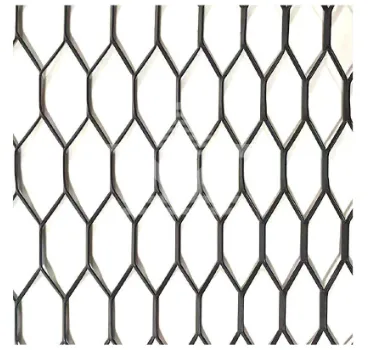The Versatility of Aluminium Perforated Screens
Aluminium perforated screens have emerged as a popular choice across various industries due to their unique properties and versatile applications. Made from lightweight yet durable aluminium sheets, these screens are characterized by a series of holes or perforations that can be customized in size, shape, and pattern. This feature not only enhances their aesthetic appeal but also significantly improves functionality in various settings.
Advantages of Aluminium Perforated Screens
One of the primary advantages of aluminium perforated screens is their durability. Aluminium is a corrosion-resistant material, making it ideal for both indoor and outdoor applications. Unlike other materials that may rust or degrade over time, aluminium maintains its integrity even when exposed to harsh weather conditions. This resilience translates into lower maintenance costs and a longer lifespan for products made from this material.
In addition to durability, weight is another critical factor where aluminium excels. The lightweight nature of aluminium makes these screens easy to install and handle, which can be particularly beneficial in construction and industrial applications. This characteristic also allows for a more straightforward design and manufacturing process, reducing overall project costs.
Applications in Various Industries
The applications of aluminium perforated screens are vast and varied. In the architectural industry, they are often utilized for facades, partitions, and decorative elements. Their perforated designs allow for natural light to filter through, creating breathtaking visual effects while providing privacy and reducing direct sunlight. This makes them an excellent choice for modern buildings, adding an element of sophistication and contemporary flair.
aluminium perforated screen

In the manufacturing sector, aluminium perforated screens are frequently used in filtration systems, sound barriers, and ventilation solutions. The precise sizes of the perforations can be engineered to suit specific needs, allowing for optimal air and fluid flow in industrial processes. This ensures that machinery operates efficiently and helps maintain a safe working environment by filtering out particulates and noise.
Moreover, in the agricultural sector, these screens are beneficial for applications such as grain storage and livestock facilities. The perforated screens allow for adequate air circulation, which is crucial in maintaining the quality of stored products and ensuring the well-being of animals.
Environmental Considerations
With increasing awareness of environmental sustainability, aluminium perforated screens offer an eco-friendly solution. Aluminium is a recyclable material, and when sourced responsibly, it contributes to reducing waste and conserving energy. Manufacturers can repurpose scrap aluminium to create new products, thus promoting a circular economy. Furthermore, the longevity of aluminium products means less frequent replacements, further minimizing environmental impact.
Conclusion
Aluminium perforated screens represent a perfect synthesis of aesthetics and functionality. From architectural designs that enhance visual appeal to industrial applications that require durability and efficiency, the versatility of these screens is unmatched. They cater to a myriad of needs across different sectors while also aligning with modern environmental goals. As technology advances, we can expect even more innovative uses for aluminium perforated screens in the future, solidifying their place as an essential material in our built environment. Their combination of practicality, sustainability, and style ensures that they will remain a preferred option for architects, builders, and manufacturers alike.
-
Why Galvanized Trench Cover Steel Grating Resists Corrosion
NewsJul.10,2025
-
The Versatility and Strength of Stainless Expanded Metal Mesh
NewsJul.10,2025
-
Load Calculations in Steel Grating Platforms
NewsJul.10,2025
-
Keeping Pets and Kids Safe with Chicken Wire Deck Railing
NewsJul.10,2025
-
Hole Diameter and Pitch for Round Perforated Metal Sheets
NewsJul.10,2025
-
Aluminium Diamond Mesh in Modern Architecture
NewsJul.10,2025
Subscribe now!
Stay up to date with the latest on Fry Steeland industry news.

